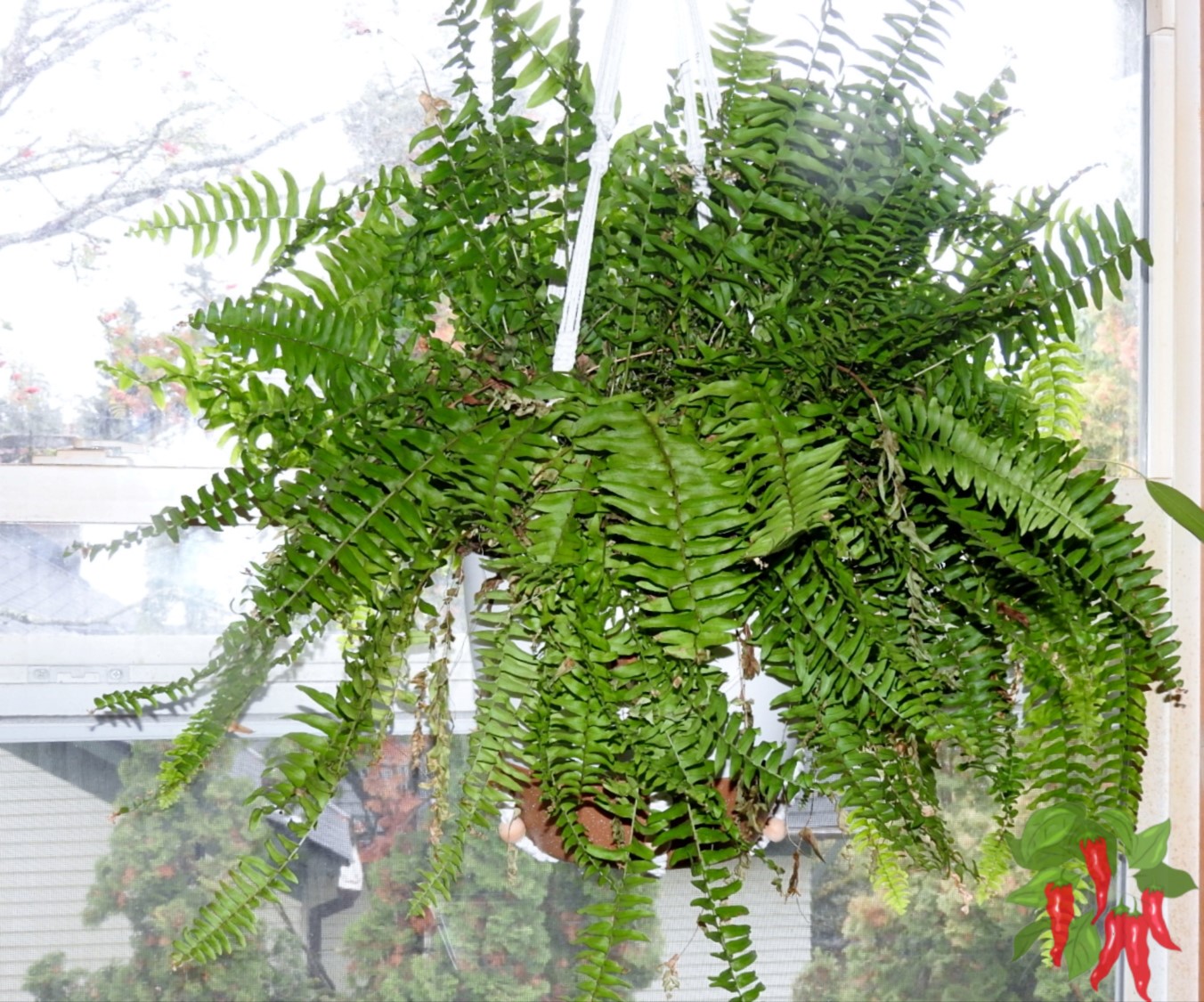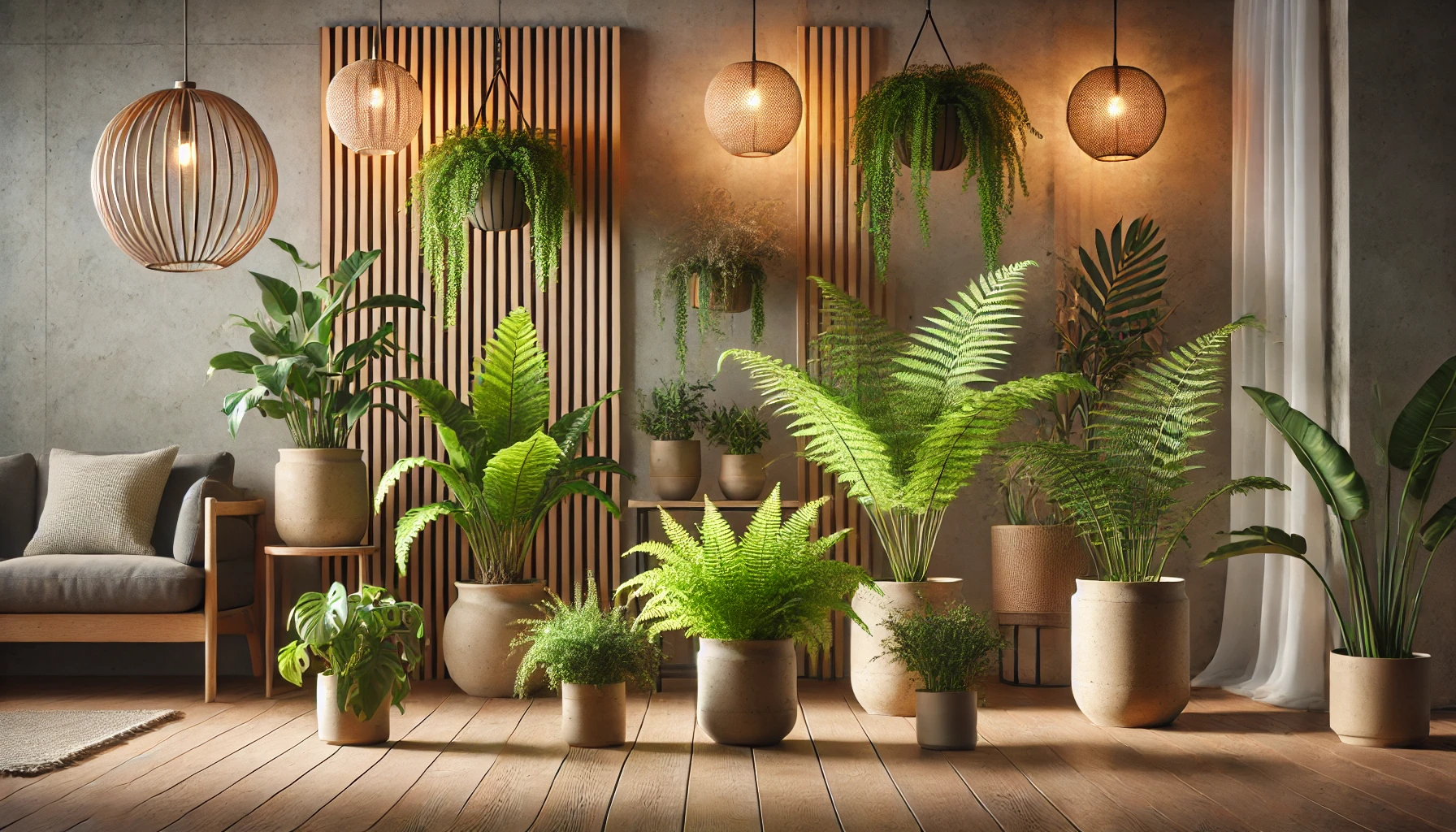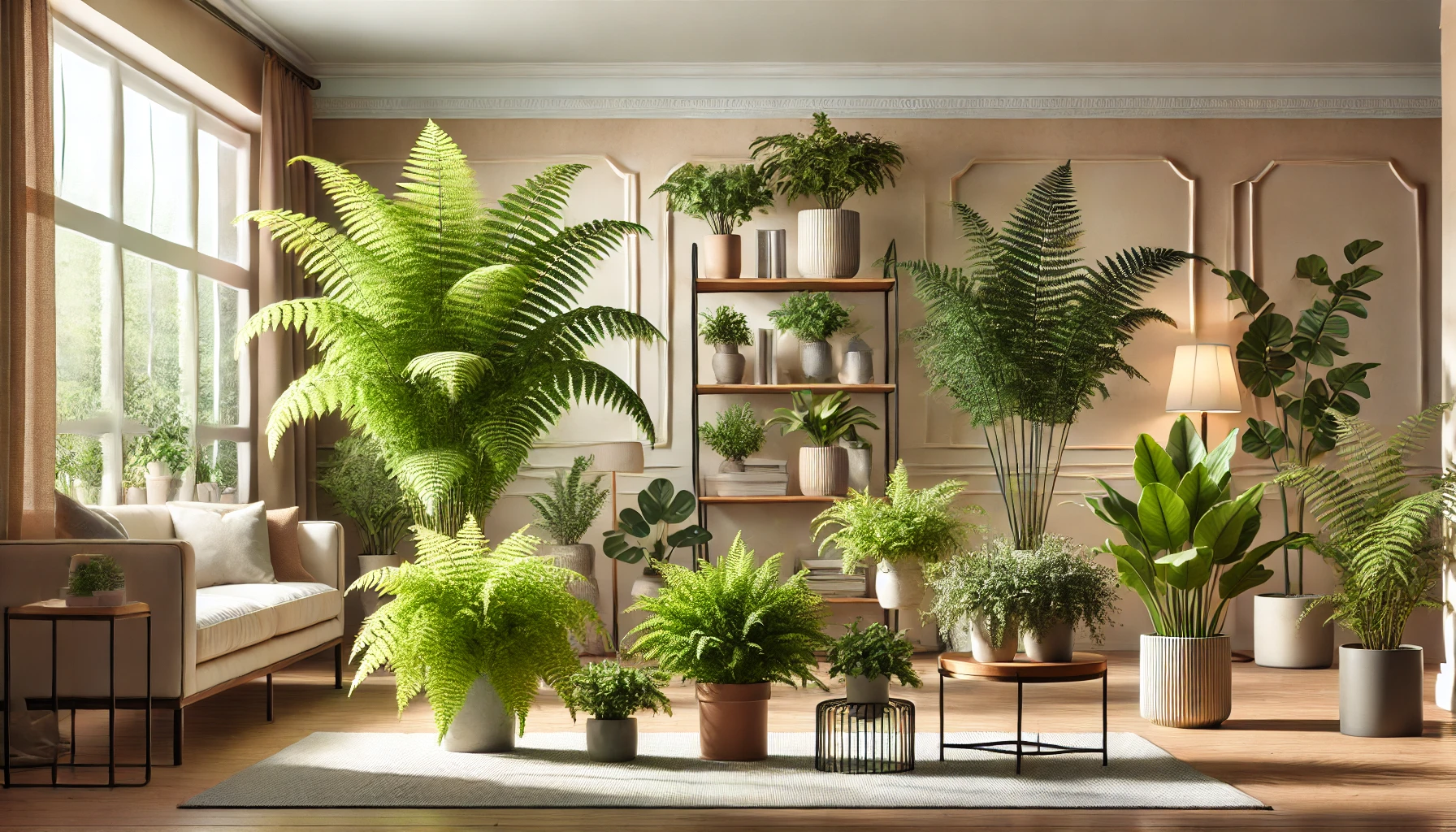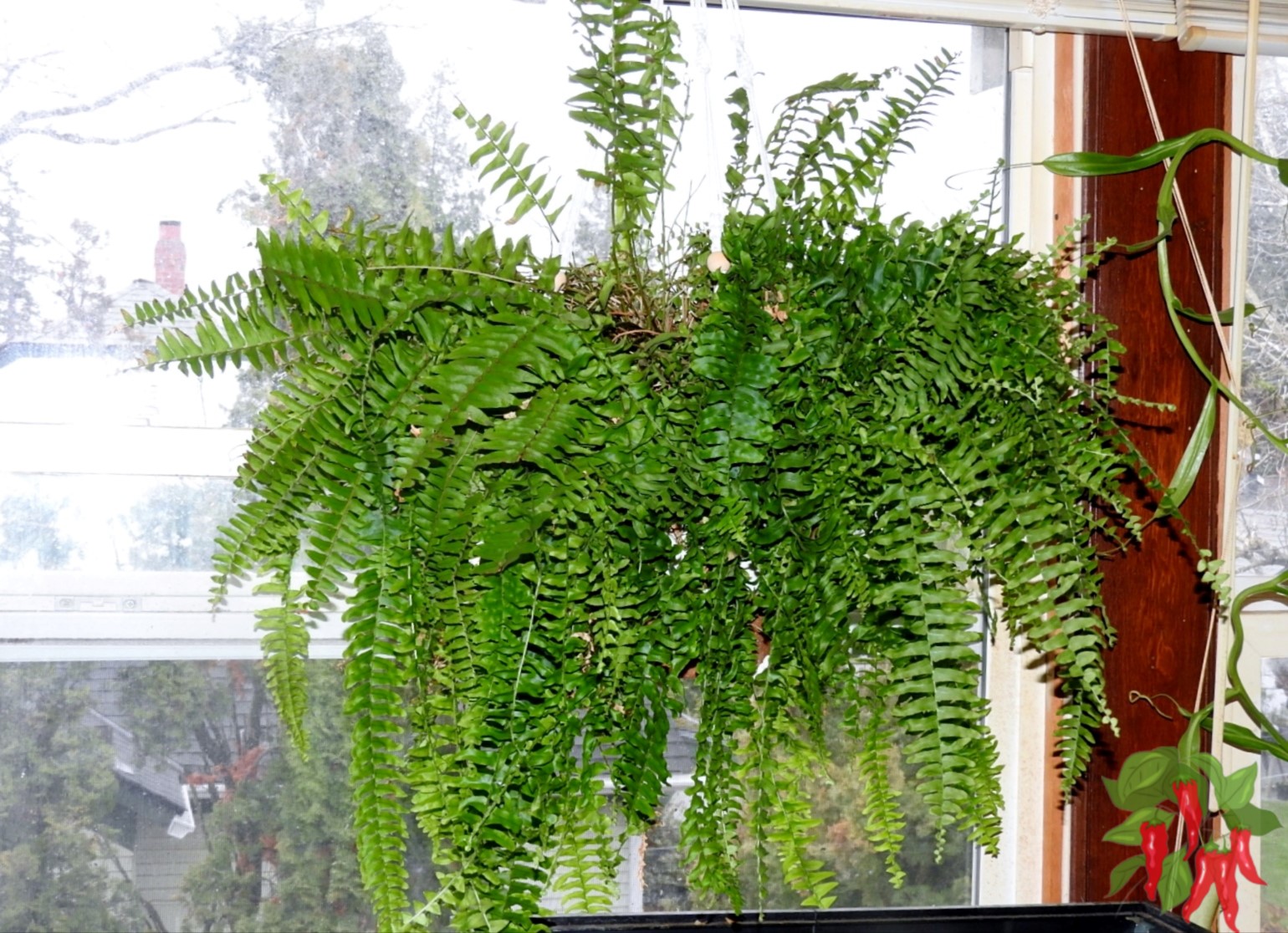This post contains affiliate links. If you buy something from one of our links we may earn a commission. Thanks
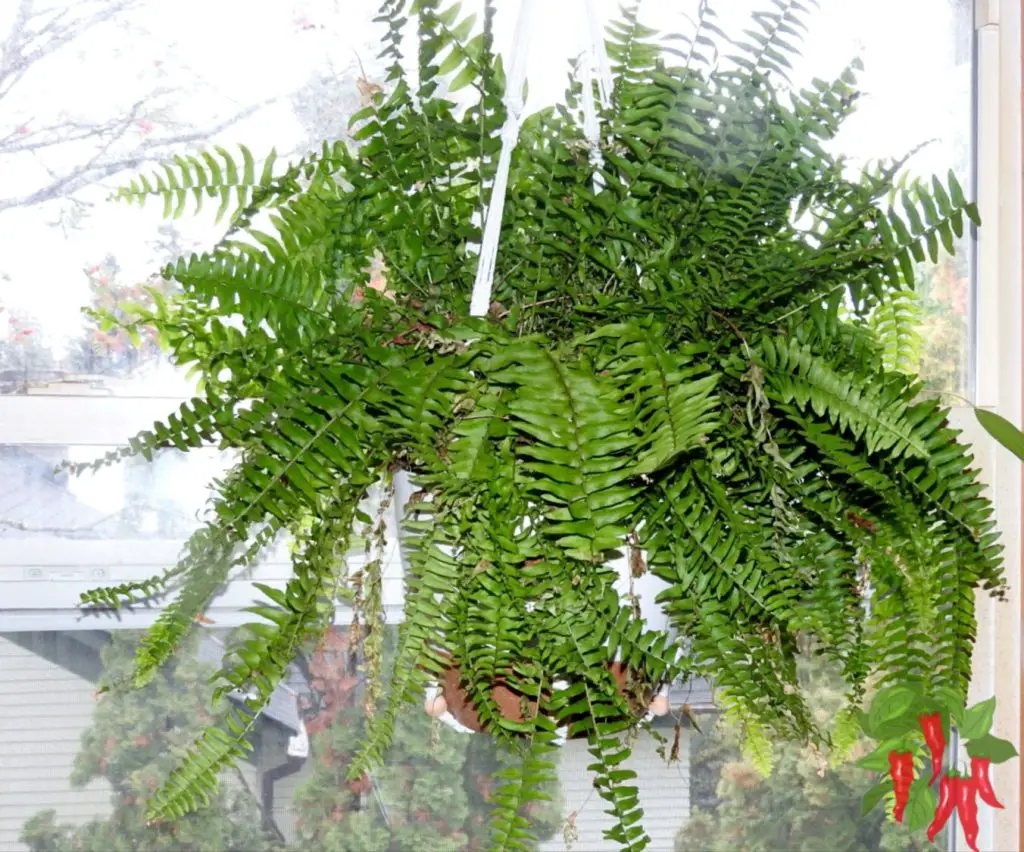
Master Indoor Fern Care with easy tips! Learn to keep your ferns lush and healthy with proper watering, lighting, and soil for a thriving indoor garden.
Indoor Fern Care Made Easy
Indoor Fern Care doesn’t have to be a challenge—it’s an opportunity to bring lush greenery and calming energy into your home.
Whether you’re a seasoned plant enthusiast or a beginner, mastering the basics can help your ferns thrive and transform your indoor space into a vibrant sanctuary.
Indoor Fern Care Key Takeaways
- Indoor Fern Care involves providing consistent moisture, high humidity, and indirect light.
- Use well-draining soil and avoid overwatering to prevent root rot.
- Maintain humidity by misting or using a pebble tray.
- With proper placement and regular care, indoor ferns can flourish, adding beauty and health benefits to your space.
Indoor Ferns and Their Benefits
Indoor ferns are more than just beautiful greenery—they’re natural air purifiers, mood boosters, and decorative additions that bring life to any space.
Their lush foliage enhances aesthetics, promotes relaxation, and creates a healthier indoor environment by improving air quality and maintaining humidity levels.
The ferns (Polypodiopsida or Polypodiophyta) are a group of vascular plants (plants with xylem and phloem) that reproduce via spores and have neither seeds nor flowers. https://en.wikipedia.org/wiki/Fern
How This Guide Will Help
This guide provides a step-by-step approach to indoor fern care, from selecting the right varieties for your space to mastering proper watering, lighting, and styling techniques.
Whether you’re a beginner or a seasoned plant enthusiast, you’ll gain the knowledge and confidence to nurture thriving ferns that elevate your home or office.
Part 1: Choosing the Right Ferns
 Costa Farms Bird’s Nest Fern Plant, Easy Care Live Indoor Houseplant in Modern Decor Planter, Potted in Soil Potting Mix, Outdoor Garden Gift, Beautiful Home Décor, Housewarming Gift, 15-Inches Tall
Costa Farms Bird’s Nest Fern Plant, Easy Care Live Indoor Houseplant in Modern Decor Planter, Potted in Soil Potting Mix, Outdoor Garden Gift, Beautiful Home Décor, Housewarming Gift, 15-Inches Tall
Selecting the right ferns for your indoor space is the first step toward successful fern care.
With so many varieties to choose from, it’s essential to consider factors like lighting, humidity, and your level of experience with plants.
This section explores options for beginners, highlights unique varieties, and introduces exotic choices for enthusiasts.
1. Best Indoor Ferns for Beginners
Starting with beginner-friendly ferns ensures a positive and rewarding plant care experience. These hardy options are low-maintenance and adaptable.
- Boston Fern: Known for its resilience and lush foliage, it thrives with moderate care.

- Maidenhair Fern: Delicate and charming, ideal for learning the basics of fern care.

- Button Fern: Compact and hardy, perfect for small spaces and low-maintenance routines.

2. Top Indoor Fern Varieties
Indoor fern varieties offer a range of shapes, sizes, and textures, making them versatile for any decor style or space.
- Bird’s Nest Fern: Features glossy, wavy fronds and thrives in low light.

- Staghorn Fern: Unique antler-shaped fronds that can be mounted for a striking display.

- Kangaroo Paw Fern: Distinctive foliage with an exotic flair, perfect for indoor gardens.

3. Rare and Exotic Indoor Ferns
For enthusiasts seeking a unique addition, rare and exotic ferns provide a touch of sophistication and intrigue to indoor spaces.
- Blue Star Fern: Boasts blue-green foliage and an ethereal appearance.

- Crested Fern: Offers feathery, textured fronds that stand out in any collection.

- Silver Fern: Striking with its silvery sheen, ideal for creating a focal point indoors.

Closing Note
Choosing the right ferns sets the foundation for a thriving indoor garden.
Whether you’re drawn to classic favorites like Boston Ferns or crave the exotic charm of Staghorn Ferns, selecting varieties that match your environment and care abilities ensures long-lasting success.
Let’s move on to understanding how to care for your indoor ferns!
Part 2: Essentials of Indoor Fern Care
Proper care is the key to maintaining healthy and vibrant indoor ferns. From selecting the right soil and pots to adjusting care practices with the seasons, this section provides everything you need to nurture your ferns confidently.
1. Caring for Indoor Ferns
Indoor ferns thrive when given consistent care tailored to their needs. Understanding their preferences for moisture, light, and nutrients is essential for healthy growth.
- Watering: Keep soil consistently moist but not soggy. Water when the top inch of soil feels dry.
- Humidity: Maintain high humidity levels (50-70%) by misting, using a pebble tray, or placing a humidifier nearby.
- Feeding: Apply a balanced, water-soluble fertilizer diluted to half strength every 4-6 weeks during the growing season.
- Pruning: Trim yellow or brown fronds regularly to encourage new growth and maintain a tidy appearance.
2. The Best Soil for Indoor Ferns
Ferns require a soil mix that retains moisture while providing excellent drainage to prevent waterlogging and root rot.
- Ideal Soil Mix: Combine the following for optimal fern health:
- Peat Moss: Retains moisture and supports root development.
- Coco Coir: A sustainable alternative to peat moss that improves water retention.
- Perlite: Ensures aeration and proper drainage, preventing compacted soil.
- pH Levels: Aim for a slightly acidic to neutral pH (5.5-7.0).
Pro Tip: Mix in organic matter like compost or worm castings for added nutrients.
3. Choosing Pots for Indoor Ferns
The right pot provides stability, encourages healthy growth, and complements your fern’s aesthetics.
- Pot Size: Select a pot slightly larger than the root ball to avoid overcrowding.
- Drainage: Ensure pots have drainage holes to prevent water from pooling at the roots.
- Materials: Use clay or terracotta pots for better moisture regulation, or opt for lightweight plastic pots for portability.
Styling Tip: Pair decorative pots with functional inner liners to maintain aesthetic appeal and practicality.
4. Seasonal Care for Indoor Ferns
Ferns have varying needs throughout the year. Adjusting your care routine ensures they stay healthy in every season.
- Summer:
- Increase watering frequency to counteract higher temperatures.
- Protect ferns from excessive direct sunlight by moving them to shaded areas.
- Winter:
- Reduce watering but maintain humidity levels.
- Place ferns away from drafts and heating vents to avoid stress.
- Spring and Fall:
- Focus on pruning and feeding to support active growth phases.
5. Fertilizing Indoor Ferns
Fertilizing your ferns provides the nutrients they need to produce lush, green fronds.
- Type of Fertilizer: Use a balanced, water-soluble fertilizer with equal NPK (nitrogen, phosphorus, potassium) ratios.
- Frequency: Fertilize every 4-6 weeks during spring and summer. Skip feeding in fall and winter when growth slows.
- Application Tips: Dilute fertilizer to half-strength and apply to moist soil to prevent root burn.
Eco-Friendly Tip: Consider organic fertilizers like compost tea or liquid seaweed for a sustainable option.
Closing Note
By mastering the essentials of indoor fern care, you can create a thriving, lush environment that enhances your space.
Whether it’s selecting the right soil or adjusting care with the seasons, these steps ensure your ferns stay healthy and beautiful all year long.
Let’s move on to styling and placing your ferns for maximum impact!
Part 3: Styling and Placement

Costa Farms Kimberly Queen Fern, Live Indoor Plant, Houseplant Potted in Premium Décor Plant Pot, Potted in Potting Soil, Beautiful Room Decor, Birthday, Housewarming Gift
Styling and strategically placing ferns indoors not only enhances their aesthetic appeal but also ensures they thrive in the right conditions.
This section explores creative ways to style ferns and select ideal locations to match their needs.
1. Hanging Ferns: Care and Styling
Hanging ferns add elegance and greenery to your space without taking up floor or shelf space.
With proper care and placement, they can become stunning focal points.
- Styling Ideas:
- Use macramé hangers or decorative baskets for a boho-inspired look.
- Hang ferns at varying heights for depth and visual interest.
- Position them near windows for bright, indirect light.
- Care Tips:
- Water hanging ferns frequently, as they dry out faster.
- Mist regularly to maintain humidity.
- Rotate occasionally to ensure even growth.
2. Fern Terrariums: A Beginner’s Guide

Mini Fern Plants (6 Plants) (2″ Pots) Terrariums | Fairy Gardens | Assorted Varieties
Fern terrariums are self-contained ecosystems that are easy to maintain and visually captivating. They’re perfect for small spaces or as statement decor pieces.
- Steps to Create a Fern Terrarium:
- Choose a Container: Use a glass jar or bowl with a lid to maintain humidity.
- Layer the Base: Add pebbles for drainage, activated charcoal to prevent mold and a layer of potting soil.
- Select Ferns: Choose compact varieties like Button Fern or Maidenhair Fern.
- Add Accents: Include decorative stones, moss, or small figurines for visual interest.
- Care Tips:
- Place in bright, indirect light.
- Water sparingly to avoid over-saturation.
- Remove the lid occasionally to prevent excess moisture buildup.
3. Ferns for Low Light Spaces
Not all rooms are flooded with light, but certain ferns adapt well to dim spaces. These varieties bring greenery to darker areas without compromising their health.
- Recommended Low-Light Ferns:
- Bird’s Nest Fern: Thrives in shaded conditions with minimal fuss.
- Japanese Painted Fern: Adds a touch of elegance with its silver-hued fronds.
- Kangaroo Paw Fern: Hardy and adaptable to lower light environments.
- Placement Tips:
- Place on shelves or desks away from direct light.
- Use mirrors to reflect available light and brighten the space.
4. Ferns for Humid Indoor Spaces
Humidity-loving ferns flourish in areas with consistent moisture, making them ideal for kitchens, bathrooms, or other damp spaces.
- Best Ferns for Humidity:
- Boston Fern: A classic choice that thrives in high humidity.
- Maidenhair Fern: Requires consistent moisture and humidity.
- Asparagus Fern: Hardy and well-suited to humid environments.
 Fern Leaf Plumosus Asparagus Fern – 4″ Pot – Easy to Grow – Great Houseplant
Fern Leaf Plumosus Asparagus Fern – 4″ Pot – Easy to Grow – Great Houseplant
- Placement Tips:
- Position ferns near sinks or showers to capitalize on natural humidity.
- Use humidity trays or mist regularly if the air becomes too dry.
5. Ferns in Bathroom Décor
Bathrooms are naturally humid environments, making them perfect for moisture-loving ferns. With creative styling, ferns can transform a bathroom into a lush, spa-like retreat.
- Styling Ideas:
- Hang Boston Ferns from the ceiling to add height and greenery.
- Place Maidenhair Ferns on windowsills for a touch of elegance.
- Arrange small Button Ferns on shelves or around the sink for a charming touch.
- Care Tips:
- Ensure the bathroom has some natural light, even if indirect.
- Rotate plants to prevent uneven growth.
- Wipe leaves occasionally to remove dust and maintain their vibrancy.
Closing Note
Styling and placing ferns strategically in your home can elevate the ambiance of any space. From hanging arrangements to humid corners, these options ensure that your ferns thrive while enhancing your decor. Next, we’ll dive into troubleshooting and advanced techniques for fern care!
Part 4: Troubleshooting and Advanced Techniques
Indoor ferns can be delicate and require specific care to thrive. This section focuses on advanced techniques and solutions for common challenges, ensuring your ferns stay healthy and beautiful.
1. How to Revive a Dying Fern
Ferns can show signs of distress due to environmental changes or improper care. Reviving them requires identifying the issue and taking corrective actions.
- Common Signs of a Dying Fern:
- Yellowing or browning fronds.
- Drooping or wilting appearance.
- Dry or soggy soil.
- Steps to Revive:
- Check Watering: Ensure the soil is moist but not waterlogged. If overwatered, allow the soil to dry slightly; if underwatered, provide a thorough soak.
- Increase Humidity: Mist the plant daily or place it on a pebble tray to boost moisture.
- Adjust Light: Move the fern to a spot with bright, indirect light if it’s too dark or too bright.
- Trim Damaged Fronds: Remove dead or severely damaged fronds to encourage new growth.
2. Common Mistakes When Caring for Ferns
Avoiding common pitfalls in fern care can prevent stress and damage to your plants. Understanding these mistakes will help you maintain healthy ferns.
- Overwatering:
- Symptoms: Yellowing leaves, soggy soil, root rot.
- Solution: Water only when the top inch of soil is dry, and use a pot with drainage holes.
- Neglecting Humidity:
- Symptoms: Brown, crispy fronds.
- Solution: Mist leaves regularly and use a humidifier in dry environments.
- Improper Lighting:
- Symptoms: Scorched fronds from direct light or pale, limp growth from low light.
- Solution: Provide bright, indirect light and rotate the plant periodically.
3. Indoor Fern Pests and Diseases
Pests and diseases can harm your ferns, but early identification and treatment can save them. Here’s how to spot and address common issues.
- Common Pests:
- Spider Mites: Tiny, web-spinning pests that cause yellowing leaves.
- Solution: Wipe leaves with soapy water and increase humidity.
- Mealybugs: White, cotton-like insects on fronds and stems.
- Solution: Dab with rubbing alcohol or apply insecticidal soap.
- Spider Mites: Tiny, web-spinning pests that cause yellowing leaves.
- Common Diseases:
- Root Rot: Caused by overwatering and poor drainage.
- Solution: Repot the fern in fresh, well-draining soil and trim damaged roots.
- Leaf Spot: Brown or black spots caused by fungal infections.
- Solution: Remove affected fronds and improve air circulation.
- Root Rot: Caused by overwatering and poor drainage.
4. Propagating Indoor Ferns
Propagation allows you to expand your fern collection or share your plants with others. It’s a rewarding process that can be done through division or spores.
- Propagation Methods:
- Division:
- Suitable for ferns with clumps or runners (e.g., Boston Fern).
- Steps: Gently remove the plant from its pot, separate sections with roots attached, and repot each section in fresh soil.
- Spores:
- Advanced method for creating new plants.
- Steps: Collect spores from mature fronds, sprinkle onto moist soil, cover with plastic wrap to retain humidity, and keep in indirect light until germination.
- Division:
- Care for New Plants:
- Keep the soil moist and maintain high humidity to encourage healthy growth.
Closing Note
Troubleshooting and advanced techniques ensure that your indoor ferns remain vibrant, even in challenging conditions.
By addressing common mistakes, managing pests and diseases, and propagating with care, you can enjoy a flourishing fern collection that continues to enhance your space.
Let’s conclude with a summary of the benefits and key tips for indoor fern care!
Part 5: Additional Insights and Benefits
Indoor ferns are more than just decorative plants; they offer numerous advantages for health, wellness, and practicality.
This section highlights the unique benefits of indoor ferns, safe options for pet owners, and cost-saving care tips.
1. Benefits of Indoor Ferns
Ferns are a valuable addition to any indoor space, providing both functional and aesthetic benefits. Their lush foliage adds charm while enhancing the environment.
- Air-Purifying Qualities:
- Ferns like the Boston Fern filter harmful pollutants such as formaldehyde and xylene, improving indoor air quality.
- Stress Reduction:
- The presence of greenery promotes relaxation and reduces stress levels, creating a calming atmosphere.
- Aesthetic Appeal:
- Ferns’ cascading fronds add natural beauty and texture to your decor, complementing various styles.
Pro Tip: Place ferns in frequently used areas like living rooms or offices to maximize their stress-relieving effects.
2. Non-Toxic Ferns for Homes with Pets
If you have pets, choosing non-toxic plants is crucial to ensuring their safety. Fortunately, several fern varieties are safe for cats and dogs.
- Pet-Friendly Ferns:
- Boston Fern: Safe and easy to care for, ideal for pet-friendly households.
- Bird’s Nest Fern: Non-toxic with unique, wavy fronds that add elegance.
- Staghorn Fern: A visually striking and pet-safe option.
- Placement Tips:
- Elevate ferns on shelves or use hanging baskets to keep them out of reach of curious pets.
- Regularly check for signs of chewing and move the plant if necessary.
3. Budget-Friendly Fern Care Hacks
Caring for ferns doesn’t have to break the bank. Simple, affordable solutions can keep your ferns thriving while saving money.
- DIY Humidity Trays:
- Use a shallow tray filled with pebbles and water to create a humid environment without purchasing a humidifier.
- Cost-Effective Fertilizers:
- Use diluted compost tea or leftover coffee grounds (non-flavored) to provide nutrients.
- Repurpose Containers:
- Repurpose old jars, baskets, or pots with proper drainage to save on plant containers.
- Propagate for Free:
- Divide mature ferns or collect spores to grow new plants without spending extra.
Eco-Friendly Tip: Use rainwater to water your ferns—it’s free and avoids the chemicals found in tap water.
Closing Note
The additional benefits and insights into indoor fern care make these plants a must-have for any home.
Whether you’re enjoying their air-purifying qualities, ensuring a safe environment for pets, or using cost-saving care techniques, ferns provide endless value.
Let’s recap the key takeaways for integrating ferns into your indoor space!
FAQ Section
Indoor ferns are a favorite for their lush, decorative foliage, but they require specific care to thrive. Here are answers to common questions to help you succeed in growing vibrant, healthy ferns.
Q. What is the best light for indoor ferns?
A. Most ferns prefer bright, indirect light. Avoid placing them in direct sunlight, which can scorch their delicate fronds.
Q. How often should I water my indoor fern?
A. Water your fern when the top inch of soil feels dry. Keep the soil moist but not soggy, as overwatering can lead to root rot.
Q. How do I increase humidity for indoor ferns?
A. Use a humidifier, mist the leaves regularly, or place the fern on a pebble tray with water to maintain a high-humidity environment.
Q. What type of soil is best for indoor ferns?
A. Use a well-draining mix containing coco coir, perlite, and peat moss to retain moisture without becoming waterlogged.
Q. Can ferns grow in low-light spaces?
A. Yes, some varieties, like Bird’s Nest Fern and Boston Fern, can tolerate low light, but they thrive better in brighter, indirect light.
Conclusion
Indoor Fern Care is all about understanding their needs and creating the right environment.
These elegant plants are more than just decorations—they are natural air purifiers and mood enhancers that can transform your space into a calming sanctuary.
With thoughtful care, these stunning plants can bring beauty and tranquility to your home.
Recap of Key Points
- Choosing the Right Ferns: From beginner-friendly options like Boston Ferns to exotic varieties, selecting the right fern ensures a positive plant care experience.
- Care Essentials: Consistent watering, proper lighting, and well-draining soil are crucial for healthy growth.
- Styling and Placement: Strategic placement in bathrooms, terrariums, or hanging arrangements can elevate your home’s decor while supporting the ferns’ needs.
- Troubleshooting and Advanced Techniques: Address common challenges like pests or yellowing leaves, and propagate your ferns to expand your collection.
- Additional Benefits: Enjoy their air-purifying qualities, pet-friendly options, and cost-effective care hacks.
Give Growing Indoor Ferns a Try
Indoor ferns are incredibly versatile, offering a blend of beauty, functionality, and wellness benefits.
Whether you’re a seasoned plant enthusiast or a newcomer, ferns can enrich your home’s aesthetics and atmosphere.
Start small or grow your collection with confidence, knowing you have the tools to care for these lush, vibrant plants successfully.
Key Takeaway: With thoughtful care, indoor ferns will reward you with lush greenery, improved air quality, and a peaceful environment to enjoy year-round. 🌿
Key Takeaways
- Provide bright, indirect light for optimal growth.
- Keep soil moist, but avoid waterlogging.
- Maintain high humidity with misting, pebble trays, or a humidifier.
- Choose pots with good drainage to prevent root rot.
- Select beginner-friendly ferns if you’re just starting out.
By following these tips, you’ll create a lush, thriving indoor fern collection that enhances your home’s aesthetic and atmosphere.
🌿 Indoor Fern Guides
Bring lush greenery into your home! These expert guides will help you grow, revive, and care for beautiful indoor ferns with ease.
Related Content
Visit my Amazon Influencer Page for videos and gardening products Grow Your Own Garden













